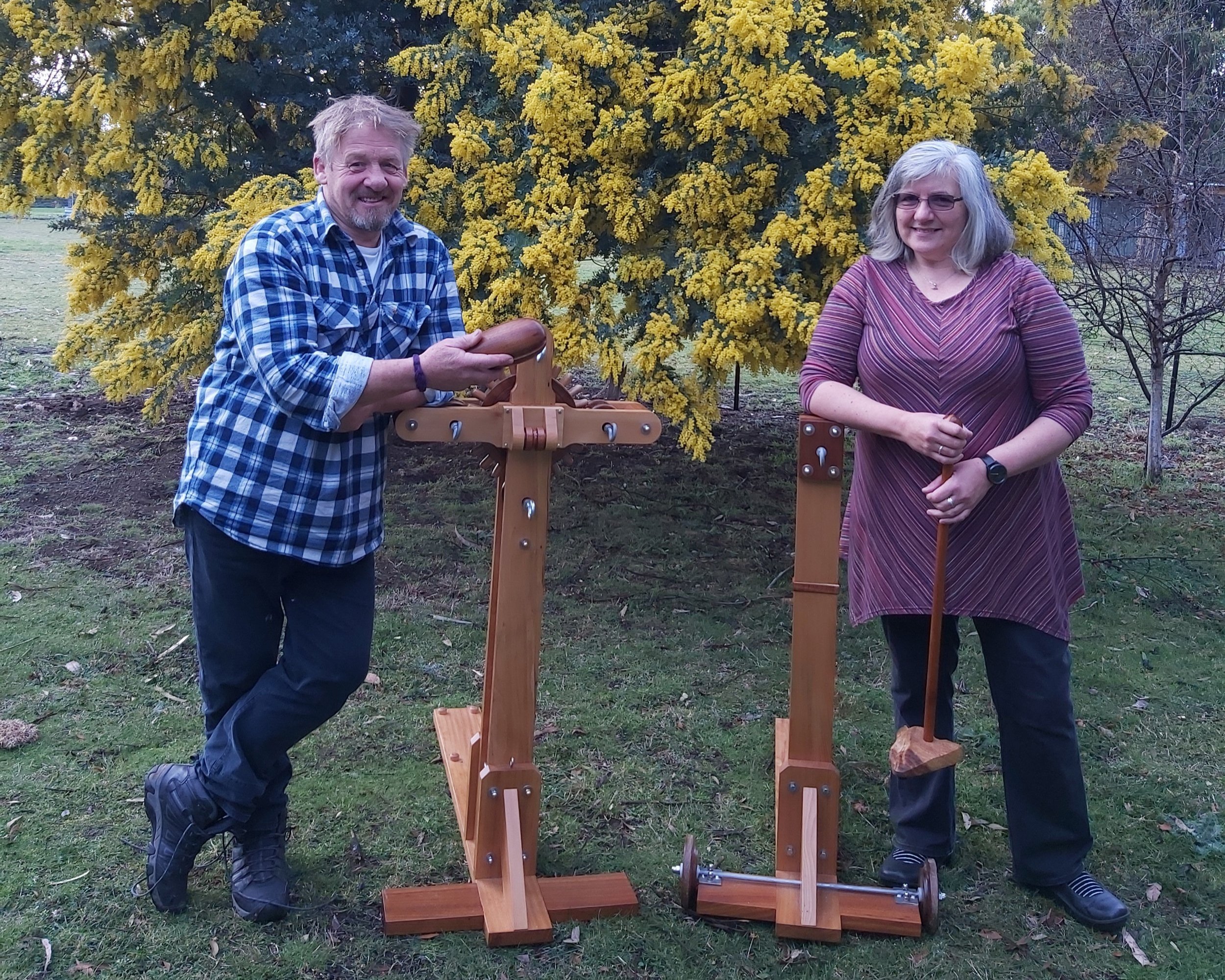The Story of the Traditional Wooden Rope Making Machine
Prior to the 2019 Australian Wooden Boat Festival in Hobart Tasmania, Paul Cullen, the Festival Organiser, commissioned this traditional wooden rope making machine from his fellow Antarctic wintering friend Graeme ‘Critter’ Creighton of Colac, Victoria. Together with Critter’s friend Arthur Grant , the rope machine was designed and made.
Paul and Critter had wintered together at Casey Station in 2000; Paul as the Station Leader and Critter as a Diesel Mechanic. They have remained close friends ever since.
Critter made several trips to Tasmania during 2018 to add some suitable timbers to his collection. He also searched the internet for inspiration on a design. He settled on a video made by a Swedish rope maker at a community fair that he watched 50 times in order to transpose what he saw on screen to a design he could use for cutting the timbers.
The machine is finished in Danish oil and comprises five parts;
rope winding stand
‘traveller’ stand
‘brake’
‘top’
yarn dispenser.
Critter had no idea if the machine was going to work when he made and as he said to Paul Cullen ‘But it’ll look good!”. And he was right.
Scroll down to find out more.
The Rope Winding Stand
The foot of the rope winding stand is made of Victorian blackwood and Queensland blackbutt. The uprights are made from Tasmanian celery top pine sourced from Hydrowood (who salvage wood from dams on the west coast of Tasmania) courtesy of Dave Golding of Glen Huon. The cog wheel is made from blackwood, with cogs made from Tasmanian oak.
A weight made from an old red gum railway sleeper from Colac provides ballast.
There are four hooks on the stand which turn in a 1:3 ratio with the handle. The cogs turn in four wheels with copper tube separators.
Although there are four hooks on the rope maker, only three are most commonly used. Four hooks are used if making a rope with a core, with the central pulley wheel used to tension a non-spinning core strand; the core shortens as the rope is made so it needs to travel over the pulley with a weight attached.
The Traveller
The foot of the traveller is made of blackwood, and the upright from celery top pine, and topped with red gum around the bearings support block. A slab of red gum adds ballast and has a plaque detailing the craftsmen’s names.
Wheels at the front of the traveller allow the stand to be pulled along as the twisting shortens the strands, and the rear foot of the traveller intentionally drags on the ground in order to maintain tension. Different amounts of weight can be added to this foot depending on what type and length of rope is being made.
Yarn Dispenser
Yarn on cones or spools is the easiest to dispense for threading the machine and it needs to be pulled smoothly without catching on anything or itself. A yarn dispenser from sewing machine accessories is used here, mounted on a piece of cypress pine.
The Brake
While loading thread onto the machine it is important to keep thread tension even. The traveller is designed to move towards the winding end and tends to move if the tension changes while loading threads, therefore a ‘brake ‘ is required to prevent it from moving. In this case the brake is a stick of blackwood with a wedge shaped blackwood burl on its base to push under the leading edge of the traveller (made by Critter’s mate Rod Menzies).
The Top
The top is an egg-shaped piece of grooved wood that separates the strands during rope making and controls the twist as it moves along the strands. It is made of blackwood.
The stand is made from a piece of wood found on a beach in South Australia that is believed to be from the shipwreck of the Osprey which operated in the mid 1800s, including in the Derwent River. It is a superb piece of English Oak riddled with ship worm.
The top is used to separate the strands and control the twist.
In this photo a fishing swivel is being used so that the handle on the rear of the traveller doesn’t need to be used (this reduces the number of people required to run the machine).







